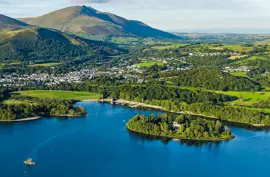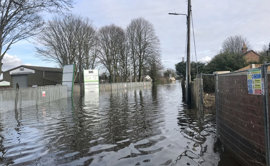Adaptive measures to mitigate the impact of climate change on land quality
Published: 2 December 2024
Climate change is no longer a distant threat; its impacts are being felt across the globe, particularly in the quality of our land.
As temperatures rise, precipitation patterns shift, and extreme weather events become more frequent, the health of our soil, the productivity of our land, and the stability of our ecosystems are increasingly at risk.

It’s important to understand the adaptive measures available to mitigate the profound effects of climate change on land quality.
Effects of climate change on land quality
Rising temperatures and altered precipitation patterns are contributing to increased soil erosion, and heavy rainfall can wash away topsoil, leading to several serious problems.
Topsoil is rich in nutrients essential for plant growth, so when it is washed away, the remaining soil is often less fertile, meaning reduced agricultural productivity and lower crop yields. The loss of productive land can have significant economic consequences for farmers and communities that rely on agriculture, including increased costs for soil restoration and reduced income from crop sales.
Soil erosion can affect nearby water bodies through sedimentation and destroy habitats for various organisms, reducing biodiversity. This loss of biodiversity can further destabilise ecosystems and reduce their resilience to environmental changes. Without topsoil to absorb rainfall, water run-off increases, which can lead to more frequent and severe flooding. This not only damages infrastructure but also poses risks to human safety.

At the opposite end of the spectrum, prolonged droughts can lead to soil crusting and compaction, reducing its ability to absorb water. Higher temperatures accelerate the decomposition of organic matter in soil, reducing its fertility and structure. This loss of organic matter diminishes the soil’s ability to retain water and support plant life.
Broadly speaking, climate change alters habitats and ecosystems, threatening the biodiversity that is crucial for maintaining healthy soils and resilient land systems.
Adaptive measures
The good news is that there are many adaptive measures already being taken to help.
Urban planning and infrastructure development
Incorporating green roofs, urban forests, and permeable pavements can help to manage stormwater, reduce urban heat islands, and improve air quality. These measures enhance the resilience of urban areas to climate change and increase property values.
Developing flood-resistant buildings and infrastructure, such as elevated structures and improved drainage systems, can mitigate the risks associated with increased flooding due to climate change.
Sustainable land use planning
Implementing zoning regulations that restrict development in vulnerable areas, such as floodplains and coastal zones, can reduce the risk of property damage and loss. These regulations can also promote the conservation of natural areas that provide ecosystem services.
Encouraging mixed-use development can reduce urban sprawl, lower greenhouse gas emissions, and create more resilient communities by integrating residential, commercial, and recreational spaces.
Reforestation and wetland restoration are landscape-level interventions that can enhance carbon sequestration, improve water regulation, and restore degraded lands, contributing to overall climate resilience.
Technological interventions
Utilising technology to create smart cities can improve energy efficiency, reduce waste, and enhance the quality of life for residents. Smart grids, energy-efficient buildings, and intelligent transportation systems are examples of how technology can support sustainable urban development.
The use of remote sensing and geographic information systems (GIS) for land monitoring and planning can help identify vulnerable areas, track changes in land use, and inform decision-making processes.
Informed decisions
Addressing the impacts of climate change on land quality requires a proactive and integrated approach. By adopting sustainable urban planning practices, innovative land use strategies, and leveraging technology, we can enhance the resilience of our land systems.
For those involved in land transactions and development, understanding these adaptive strategies is crucial for making informed decisions.
Policymakers, developers, and community stakeholders must collaborate to implement these measures, ensuring that our land resources remain productive and sustainable for future generations. Through concerted efforts, we can mitigate the adverse effects of climate change and safeguard the health and value of our planet’s land.
More from our Knowledge Hub
Environmental compliance today, creating a sustainable tomorrow
Helping you reduce risk to the environment and your operation by managing assets compliantly while achieving commercial, ESG, and net-zero goals.
Contact our experts




